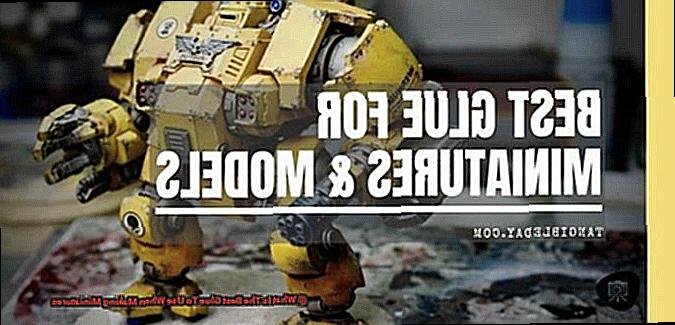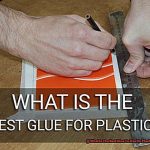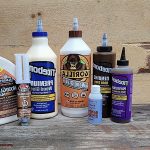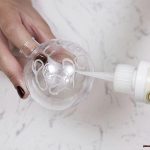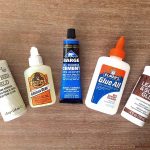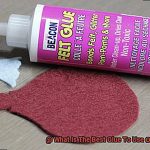Hold onto your glue guns because today we’re going to talk about the glue revolution. Choosing the right adhesive is key when it comes to crafting these tiny wonders.
But don’t worry, I’ve got your back. I’ll be your guide through the adhesive labyrinth, helping you find the perfect glue for your miniatures.
Whether you’re working with plastic, metal, wood, or fabric, each material has its own adhesive superhero. We’ll explore the wonders of cyanoacrylate, PVA, epoxy, and even hot glue – uncovering their advantages and pro tips on how to use them.
So grab your miniature components and get ready for a sticky adventure in the world of crafting fun.
What is Miniature Making?
Contents
- 1 What is Miniature Making?
- 2 Why is Choosing the Right Glue Crucial for Miniature Making?
- 3 Super Glue – Quick-Drying and Strong Bond
- 4 Epoxy Glue – Strong and Durable Bond
- 5 PVA Glue – Water-Based and Dries Clear
- 6 Fabric Glue – Flexible and Washable Bond
- 7 Hot Glue Guns – Quick Application with Strong Bonds
- 8 Considerations When Choosing a Glue for Miniature Making
- 9 Conclusion
Miniature making is an enchanting hobby that transports us into a world of tiny wonders. It is the art of creating small-scale replicas of objects or scenes with meticulous attention to detail, precision, and boundless creativity. Miniatures can be crafted from an array of materials such as wood, clay, plastic, or metal, breathing life into miniature buildings, landscapes, figures, and even animals.
This captivating craft has a rich history dating back centuries and has been practiced in diverse cultures worldwide. Initially used for practical purposes like architectural or military planning, miniature making has evolved into an exquisite form of artistic expression and storytelling.
Central to the art of miniature making is scale. Miniatures are skillfully crafted in scales smaller than their real-life counterparts, allowing for the creation of intricate details and realistic proportions. Common scales employed by miniature makers range from 1:12 (where one inch represents one foot) to 1:48 (where a quarter inch represents one foot).
Miniature makers employ various techniques and tools to bring their creations to life. They may sculpt, carve, mold, paint, or assemble different parts with precision and finesse. The complexity of miniatures varies substantially based on the skill and experience of the maker.
With the advent of social media platforms like Instagram and YouTube, miniature making has witnessed a surge in popularity. Enthusiasts share their mesmerizing works-in-progress and awe-inspiring finished pieces online, inspiring others to embark on this delightful hobby. Dedicated communities and forums provide a platform for miniature makers to connect, exchange ideas, and learn from one another.
Beyond being a beloved pastime, miniature making finds practical applications in fields such as film production, gaming, and interior design. Miniature sets are frequently utilized in movies to create breathtakingly realistic backgrounds and captivating special effects. In gaming, miniatures take on roles as characters or props in tabletop role-playing games or strategy board games. Interior designers often incorporate miniatures as charming decorative elements or to showcase various design concepts.
Why is Choosing the Right Glue Crucial for Miniature Making?
Choosing the right glue is crucial for successful miniature making. It directly impacts the durability and stability of the finished product, ensuring that all the hard work and investment put into creating tiny works of art doesn’t go to waste. Here are several reasons why selecting the appropriate glue is so important:
- Material Compatibility: Miniature making involves working with various materials such as plastic, metal, wood, and resin. Each material has different properties and requires a specific type of glue that is compatible with those properties. Using the wrong glue can result in weak bonds, causing the miniature to break or fall apart easily.
- Bond Strength: Miniatures often have delicate and intricate parts that need to be securely attached. The right glue provides a strong bond without damaging the materials or leaving visible residue. This ensures that every tiny piece stays in place, even with regular handling or display.
- Drying Time: Depending on the complexity of the project and the crafter’s patience, selecting a glue with an appropriate drying time is crucial to ensure efficient workflow. Some glues dry quickly, allowing for immediate handling and assembly, while others require longer curing times. This enables crafters to plan their work accordingly and avoid any mishaps caused by premature handling.
- Aesthetics: The right glue can impact the aesthetics of a miniature. Some glues dry clear and barely leave any visible traces, while others may dry with a visible residue or discoloration. This becomes particularly important when working on transparent or light-colored miniatures where any adhesive marks can be highly noticeable. The goal is to create a seamless finish that enhances the overall appearance of the miniature.
- Ease of Painting: Miniature making often involves painting and adding intricate details after assembly. Using the wrong glue can make it challenging to paint over or cover up adhesive marks, resulting in an unfinished or unsightly appearance. Choosing a glue that allows for easy painting and concealing of glue marks is essential for achieving a professional-looking finish.
- Safety: Some glues emit strong odors or contain harmful chemicals that can be hazardous to health, especially when used in poorly ventilated areas. Opting for non-toxic, low odor glues ensures a safe working environment and minimizes health risks. It allows crafters to enjoy their hobby without compromising their well-being.
- Cost-effectiveness: Miniature making can be an expensive hobby, and using excessive amounts of expensive glue can significantly increase the overall cost. Selecting a glue that provides a strong bond with minimal usage can help save money in the long run. It allows crafters to stretch their budget and invest in other aspects of their miniature making projects.
Super Glue – Quick-Drying and Strong Bond
Super glue, also known as cyanoacrylate adhesive, is a remarkable adhesive that offers a quick-drying and strong bond, making it the go-to choice for miniature making. Let’s delve into the features that make super glue a reliable adhesive for this craft.
First and foremost, the quick-drying nature of super glue is a game-changer in the world of miniature making. Unlike traditional glues that may take hours or even days to dry, super glue bonds within mere seconds. This lightning-fast drying time allows for swift assembly of miniature parts, saving precious time and enabling you to work with unparalleled efficiency. No longer do you have to wait anxiously for the glue to set before moving on to the next step.
Another standout feature of super glue is its ability to provide a strong bond that ensures the miniature pieces stay securely in place. This strength is especially vital for delicate and intricate miniatures that require stability and durability. With super glue, you can have peace of mind knowing that your creations will withstand handling and display without fear of them falling apart.
One of the key advantages of super glue is its versatility. It works seamlessly on a wide range of materials commonly used in miniature making, including plastic, metal, and resin. This means you can rely on super glue for various projects and materials without having to switch between different types of adhesive. Its ability to bond different materials makes it an indispensable choice for any miniature project.
However, it’s important to note that when using super glue, applying a small amount is crucial to avoid excess glue seeping out and spoiling the appearance of the miniature. Additionally, it is advisable to work in a well-ventilated area or wear protective gloves to prevent accidental skin contact.
Furthermore, different brands of super glue may offer varying levels of viscosity and strength. Therefore, it is recommended to choose a brand that suits the specific requirements of your miniature project and provides the desired bond strength. Some super glue formulas even offer additional features such as impact resistance or flexibility, which can be advantageous for miniatures that may be subject to rough handling or require some degree of movement.
While super glue is generally a reliable choice for miniature making, it may not be suitable for all situations. For instance, if your miniatures involve materials like wood or fabric that require flexibility or if there is a need for repositioning parts after bonding, alternative glues like epoxy or adhesive putty may be more appropriate.
Epoxy Glue – Strong and Durable Bond
Epoxy glue, the superhero of adhesives, comes to the rescue, offering a bond that is not only strong but also durable. This adhesive powerhouse consists of two components – the epoxy resin and the hardener. When these two components join forces, a chemical reaction occurs, creating a bond that can withstand the toughest challenges.
Why is epoxy glue the ultimate choice for making miniatures? Let’s dive into its advantages:

- Versatility: Epoxy glue is a master of bonding different materials together. Whether you’re working with plastic, metal, wood, or even ceramics, this glue has got your back. Its ability to create a reliable and long-lasting bond with various materials is essential for miniature enthusiasts who love experimenting with different mediums.
- Herculean Strength: Once cured, epoxy glue transforms into a rock-solid bond that can handle immense pressure and tension. Miniatures often face handling or transportation hazards, but fear not. Epoxy glue ensures that your tiny creations will remain intact and secure, no matter what life throws their way.
- Resistance to Moisture and Chemicals: Mother Nature can be fickle, but epoxy glue stands tall against her challenges. Miniatures are often exposed to moisture or come into contact with chemicals. With epoxy glue as your ally, you can rest assured that your creations will remain unscathed. Rain or shine, indoors or outdoors, your miniatures will stand strong.
To achieve the best results with epoxy glue, follow the instructions meticulously. The mixing ratio of epoxy resin and hardener must be precise for optimal bonding power. Apply the glue in thin layers to ensure a seamless bond and prevent any excess from oozing out. And remember, patience is key – allow sufficient curing time before handling or making further modifications.
PVA Glue – Water-Based and Dries Clear
PVA glue, also known as polyvinyl acetate glue, is a versatile and widely accessible adhesive for miniature making. It is a water-based adhesive that dries clear, making it perfect for projects that require an invisible bond. Whether you’re an experienced miniature enthusiast or just starting out, PVA glue is a go-to choice for assembling your creations.
One of the key advantages of PVA glue is its versatility. It can bond various materials such as wood, plastic, metal, and fabric, making it suitable for a wide range of miniature projects. So whether you’re building dollhouses or crafting model airplanes, you won’t need to worry about finding a different glue for each material.
PVA glue is widely available and can be found in most craft stores and online retailers. It comes in different forms, including liquid, gel, and adhesive tapes. The liquid form is the most common and suitable for most miniature assembly tasks.
In addition to being versatile and accessible, PVA glue is also non-toxic, making it safe to use, especially for children who may be involved in miniature making. You don’t have to worry about harmful fumes or chemicals while working on your projects.
PVA glue has a relatively quick drying time, typically ranging from 10 to 30 minutes depending on the thickness of the applied layer. However, it’s important to note that while the surface may appear dry, the adhesive may still be curing underneath. Give it additional time before handling or moving the miniatures to avoid accidental damage.
When using PVA glue, it’s important to apply a thin and even layer for proper adhesion. Excess glue can cause messy residue on the miniatures’ surfaces. Use a small brush or applicator for precise application.
While PVA glue is versatile and widely accessible, it may not be suitable for all types of miniatures or specific requirements. If you need higher strength, resistance to moisture or heat, or flexibility, consider alternative glues like epoxy or cyanoacrylate (super glue).
Fabric Glue – Flexible and Washable Bond
Fabric glue is a versatile adhesive option that provides a flexible and washable bond for miniatures made with fabric materials. It is an essential tool for creating intricate designs and achieving realistic details. Here’s why fabric glue should be a staple in your miniature-making arsenal:
- Flexibility: Unlike other glues, fabric glue maintains its flexibility even after it dries. This is crucial when working with miniatures as they often require bending or shaping of the fabric to achieve lifelike poses or movements. With fabric glue, you can create movable parts or bendable clothing without worrying about the adhesive cracking or breaking.
- Washability: Miniatures made with fabric may need occasional cleaning, and fabric glue ensures that the bond remains intact even when exposed to water or cleaning solutions. You can confidently wash your fabric miniatures without fear of the adhesive dissolving or getting damaged.
- Versatility: Fabric glue is incredibly versatile and can be used for various miniature-making techniques. It is perfect for attaching fabric clothing to figurines, bonding different fabric pieces together to create intricate designs, or securing small accessories like buttons or beads onto fabric surfaces. Its strong bond ensures that your creations stay intact even with regular handling.
Choosing the right fabric glue is crucial for a successful project. Different fabric glues are designed for specific types of fabrics. It’s important to read the instructions on the glue packaging and test it on a small piece of fabric before applying it to your miniature project. This helps you choose the right type of fabric glue that suits your specific needs.
Applying fabric glue is simple – just squeeze a small amount onto one surface, then press the two fabric pieces together firmly. Allow the glue to dry completely before handling the miniature to ensure a strong and secure bond.
While fabric glue is ideal for miniatures made with fabric materials, it may not be suitable for all types of miniatures or materials. For non-fabric materials like plastic or metal, different adhesives may be more appropriate.
Hot Glue Guns – Quick Application with Strong Bonds
Hot glue guns are a miniature maker’s dream, offering the perfect combination of quick application and strong bonding capabilities. These versatile tools are a must-have for any miniature project, as they can be used on a variety of materials, including plastic, wood, metal, and fabric.
The process is simple yet effective. The hot glue gun melts a solid adhesive stick inside the gun, which is then applied to the desired surface. The melted adhesive dries rapidly, allowing for speedy assembly of miniature parts. This saves valuable time and ensures efficient progress on projects.
To achieve the best results, it is crucial to choose the right temperature setting. Higher temperatures provide stronger bonds, making them ideal for heavier materials. Lower temperatures, on the other hand, are perfect for delicate materials that require a gentler touch. This flexibility allows for precise control over the strength of the bond and prevents damage to fragile surfaces.
However, it’s important to exercise caution when using hot glue guns. The melted adhesive can cause burns if not handled properly. To ensure safety, it is recommended to wear protective gloves or finger guards during use.
While hot glue guns offer many advantages, they may not be suitable for all miniature projects. If the miniatures will be exposed to high temperatures or extreme conditions, a different adhesive may be more appropriate.
Considerations When Choosing a Glue for Miniature Making
Choosing the right glue for miniature making is essential to ensure a successful project. There are several key considerations to keep in mind when selecting a glue:
- Material compatibility: Different materials require different types of glue for optimal adhesion. Consider the material of your miniature and choose a glue that is specifically formulated to bond that material effectively. For example, plastic miniatures may require plastic cement or super glue, while metal miniatures may need epoxy or cyanoacrylate glue.
- Size and weight of the miniature: If you are working on small and delicate pieces, a glue with a thin and precise applicator is crucial. Look for glues that come with fine-tipped applicators or consider using a separate precision glue dispenser. This will help you apply the glue accurately without any mess or excess adhesive.
- Drying time: The drying time of the glue is important depending on your project. Some glues dry quickly, allowing you to move on to the next step without waiting too long. Others take longer to set, which can be beneficial if your miniature requires intricate assembly or adjustments before the bond becomes permanent.
- Strength of the adhesive: Miniatures often undergo handling and may be subjected to stress or impact. Therefore, it is important to choose a glue that provides a strong and durable bond. Look for glues that specifically mention their strength or bonding capabilities on the packaging.
- Versatility: Consider whether you will be using the glue only for miniatures or if you have other crafting projects in mind. Some glues are specifically formulated for miniature making, while others can be used for a wide range of materials and applications. If you enjoy working on various crafts, a multi-purpose glue may be a more cost-effective choice.
- Safety: Always prioritize safety when choosing a glue. Some adhesives emit strong fumes or contain toxic chemicals that can be harmful if inhaled or ingested. Read the labels carefully and look for glues that are labeled as non-toxic and safe for indoor use. Consider using adhesive alternatives such as low-odor or water-based glues if you have sensitivities or prefer a more environmentally friendly option.
Conclusion
When it comes to making miniatures, choosing the right glue is crucial.
The best glue for this task is one that provides a strong bond, dries quickly, and is easy to use. One option that ticks all these boxes is cyanoacrylate glue, also known as super glue.
Its fast-drying formula ensures that your miniature pieces stay securely in place without any messy residue. Another great choice is epoxy adhesive, which offers a strong and durable bond.
It’s perfect for attaching larger or heavier components to your miniatures. For more delicate projects, such as attaching tiny details or embellishments, a clear drying PVA glue can be the ideal choice.
Remember to always follow the manufacturer’s instructions and test the glue on a small area before applying it to your entire project.

